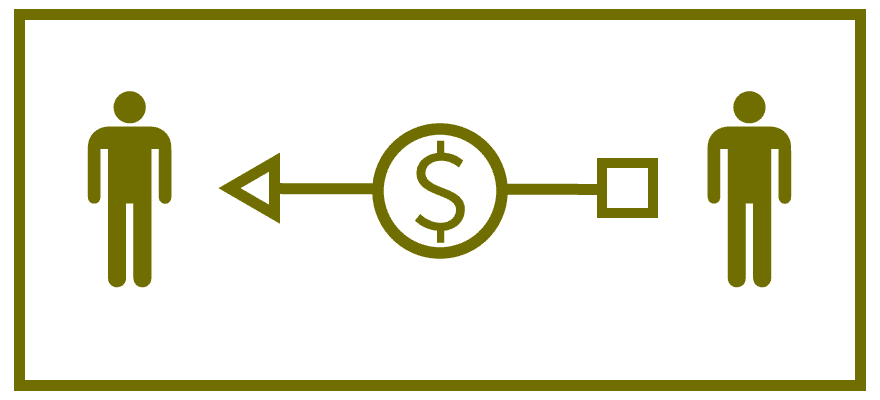Lending is one of the fastest growing sectors of the financial services industry. Even though the mechanics behind this sector have not really changed for thousands of years, today lending is transforming and becoming more and more digitalized.
This results in the provision of loans in a cheaper, faster and more effective manner. Yet such practices not only result in an increased accessibility to funds, but also impact society in numerous ways.
Debt spiral is one of the common disadvantages; loans became so easy to obtain that there are now quite a few people that have outstanding loans in numerous lending institutions.
Such people usually get one loan in order to refinance another, and so they are mostly settling interest Payments
Payments
One of the bases of mediums of exchange in the modern world, a payment constitutes the transfer of a legal currency or equivalent from one party in exchange for goods or services to another entity. The payments industry has become a fixture of modern commerce, though the players involved and means of exchange have dramatically shifted over time.In particular, a party making a payment is referred to as a payer, with the payee reflecting the individual or entity receiving the payment. Most commonl
One of the bases of mediums of exchange in the modern world, a payment constitutes the transfer of a legal currency or equivalent from one party in exchange for goods or services to another entity. The payments industry has become a fixture of modern commerce, though the players involved and means of exchange have dramatically shifted over time.In particular, a party making a payment is referred to as a payer, with the payee reflecting the individual or entity receiving the payment. Most commonl
Read this Term without actually having the resources to repay the principal.
Another disadvantage seen by society is that individuals that should not get loans are actually provided with funding, and the actions of such individuals are harmful, or even deadly in some cases.
A good example would be the recent events at San Bernardino- the shooters took a $28,500 loan from Prosper, an american peer-to-peer lending marketplace, in order to finance their operation.
Hence, it is possible to ask the question: should marketplace lenders exercise greater scrutiny in monitoring where borrowed funds are being spent? I personally see one positive aspect to making lenders verify where the funds are being sent, and two negatives.
Lending is a type of business
If you think about it, lending is not really different from most other businesses of its nature. To use an easy example with imaginary numbers: if loans amounting to $100,000 are issued, as a lender one has to make sure that:
● the interest rate for this amount is around $20,000
● the repaid interest and loans account for at least $110,000
● operating expenses for this period are lower than $10,000
If all of the above is the case, then there is a profit for the lender. Otherwise there is a loss.
Hence, the main task of the lender in order to run the business successfully is described by finding just the right people for their products, people that require funds but are also interested in repaying the loans.
Also, cutting down expenses and using new technologies, such as banking APIs, should be every lender’s goal.
It would be quite illogical to ask a lender to monitor where the issued funds are sent as this does not help the lending business to generate profit in any way.
Next to this, most other businesses don’t have to track the usage of their products after the products are paid for, and pushing lenders to take an extra step that doesn’t result in profits is just not business- friendly.
Shifting the responsibility
Another disadvantage to observing the flow of borrowed funds is that this sounds like avoidance of responsibility on the part of the government. Loans are just products and they can be used for good and bad actions, as applies to any other product.
Let’s have an easy example for this case as well. Imagine little Johnny has just purchased a brand new Nissan GT-R. The vendor here is responsible for delivering a car that can reach 100 miles per hour in just 8.5 seconds. If a vendor is unable to provide this, little Johnny would purchase his car elsewhere.
Does a seller have to be responsible for post-sale consequences? Usually the answer is yes, a vendor might be responsible for the faults in a car.
However, there is no responsibility of the vendor when it comes to the actions of little Johnny. Wouldn’t it be silly if after the sale a vendor would have to be responsible for parking and speeding tickets?
On the other hand, government institutions such as traffic police should certainly be responsible for the actions Johnny is taking with his new GT-R. Hence, making a lender verify the client’s actions is nothing more than just shifting responsibility.
Improvement in credit scoring
A lender should oversee the use of borrowed funds for one main reason - improvement of its own credit scoring engine. While most lenders are trying to advance in KYC methods to drive conversions up, credit scoring enhancements should be an objective of every lender too.
Taking data from credit bureaus is an outdated way of assessing the customer’s credit-worthiness. This is why overseeing the past and future bank transfers of the borrower should be the lenders goal.
Checking the transaction history of the client is extremely valuable when finding whether this client is eligible for a loan. Once the loan is repaid and a new one is requested, a lender may check the flow of the borrowed funds to make sure that the money wasn’t used to refinance a loan with a competitor. This can be easily achieved with technology such as Kontomatik banking API.
Summing things up
A lender should not be obliged to oversee the flow of borrowed funds as it is an activity that simply does not result in any type of gain.
Next to this, we have governmental institutions that are designed to prevent shooting, speeding and other such misdeeds from happening. However, a lender can engage in checking the usage of the funds simply to make its operations more effective.
Lending is one of the fastest growing sectors of the financial services industry. Even though the mechanics behind this sector have not really changed for thousands of years, today lending is transforming and becoming more and more digitalized.
This results in the provision of loans in a cheaper, faster and more effective manner. Yet such practices not only result in an increased accessibility to funds, but also impact society in numerous ways.
Debt spiral is one of the common disadvantages; loans became so easy to obtain that there are now quite a few people that have outstanding loans in numerous lending institutions.
Such people usually get one loan in order to refinance another, and so they are mostly settling interest Payments
Payments
One of the bases of mediums of exchange in the modern world, a payment constitutes the transfer of a legal currency or equivalent from one party in exchange for goods or services to another entity. The payments industry has become a fixture of modern commerce, though the players involved and means of exchange have dramatically shifted over time.In particular, a party making a payment is referred to as a payer, with the payee reflecting the individual or entity receiving the payment. Most commonl
One of the bases of mediums of exchange in the modern world, a payment constitutes the transfer of a legal currency or equivalent from one party in exchange for goods or services to another entity. The payments industry has become a fixture of modern commerce, though the players involved and means of exchange have dramatically shifted over time.In particular, a party making a payment is referred to as a payer, with the payee reflecting the individual or entity receiving the payment. Most commonl
Read this Term without actually having the resources to repay the principal.
Another disadvantage seen by society is that individuals that should not get loans are actually provided with funding, and the actions of such individuals are harmful, or even deadly in some cases.
A good example would be the recent events at San Bernardino- the shooters took a $28,500 loan from Prosper, an american peer-to-peer lending marketplace, in order to finance their operation.
Hence, it is possible to ask the question: should marketplace lenders exercise greater scrutiny in monitoring where borrowed funds are being spent? I personally see one positive aspect to making lenders verify where the funds are being sent, and two negatives.
Lending is a type of business
If you think about it, lending is not really different from most other businesses of its nature. To use an easy example with imaginary numbers: if loans amounting to $100,000 are issued, as a lender one has to make sure that:
● the interest rate for this amount is around $20,000
● the repaid interest and loans account for at least $110,000
● operating expenses for this period are lower than $10,000
If all of the above is the case, then there is a profit for the lender. Otherwise there is a loss.
Hence, the main task of the lender in order to run the business successfully is described by finding just the right people for their products, people that require funds but are also interested in repaying the loans.
Also, cutting down expenses and using new technologies, such as banking APIs, should be every lender’s goal.
It would be quite illogical to ask a lender to monitor where the issued funds are sent as this does not help the lending business to generate profit in any way.
Next to this, most other businesses don’t have to track the usage of their products after the products are paid for, and pushing lenders to take an extra step that doesn’t result in profits is just not business- friendly.
Shifting the responsibility
Another disadvantage to observing the flow of borrowed funds is that this sounds like avoidance of responsibility on the part of the government. Loans are just products and they can be used for good and bad actions, as applies to any other product.
Let’s have an easy example for this case as well. Imagine little Johnny has just purchased a brand new Nissan GT-R. The vendor here is responsible for delivering a car that can reach 100 miles per hour in just 8.5 seconds. If a vendor is unable to provide this, little Johnny would purchase his car elsewhere.
Does a seller have to be responsible for post-sale consequences? Usually the answer is yes, a vendor might be responsible for the faults in a car.
However, there is no responsibility of the vendor when it comes to the actions of little Johnny. Wouldn’t it be silly if after the sale a vendor would have to be responsible for parking and speeding tickets?
On the other hand, government institutions such as traffic police should certainly be responsible for the actions Johnny is taking with his new GT-R. Hence, making a lender verify the client’s actions is nothing more than just shifting responsibility.
Improvement in credit scoring
A lender should oversee the use of borrowed funds for one main reason - improvement of its own credit scoring engine. While most lenders are trying to advance in KYC methods to drive conversions up, credit scoring enhancements should be an objective of every lender too.
Taking data from credit bureaus is an outdated way of assessing the customer’s credit-worthiness. This is why overseeing the past and future bank transfers of the borrower should be the lenders goal.
Checking the transaction history of the client is extremely valuable when finding whether this client is eligible for a loan. Once the loan is repaid and a new one is requested, a lender may check the flow of the borrowed funds to make sure that the money wasn’t used to refinance a loan with a competitor. This can be easily achieved with technology such as Kontomatik banking API.
Summing things up
A lender should not be obliged to oversee the flow of borrowed funds as it is an activity that simply does not result in any type of gain.
Next to this, we have governmental institutions that are designed to prevent shooting, speeding and other such misdeeds from happening. However, a lender can engage in checking the usage of the funds simply to make its operations more effective.






















